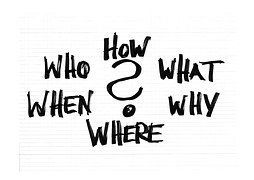Frequently Asked Questions
What is Newsroom 101?
Newsroom 101 is an electronic workbook where professors can assign students to practice grammar, usage, spelling and style of the kind journalists and other communicators need to master.
Newsroom 101 presents more than 2,800 items on grammar, usage, spelling and Associated Press style in 275 quizzes. It is designed for courses in journalism, mass communication, public relations, health communication and similar fields where teachers do not have time to provide students with the amount of practice that students need in these subjects.
 What is the format of Newsroom 101?
What is the format of Newsroom 101?
Newsroom 101 consists of multiple-choice “instructional quizzes” designed to teach rather than test. Students learn immediately whether their answer was correct, and, when the answer is not obvious, feedback appears explaining it. Except for the pretest and posttest, students can repeat a quiz as often as they choose. Only the highest grade will appear in the gradebook.
What does it cost?
Please see Students / Pricing for current costs. Students pay through Paypal upon enrolling. For students enrolled in a course, this fee gives them access for the duration of a one-semester course of up to 120 days. If someone does not have a Paypal account, Paypal includes the option of paying with a credit or debit card instead.
Professionals enroll in the section for professionals and pay through Paypal upon enrolling, for a year of access. Professors use Newsroom 101 free when they require students to enroll in Newsroom 101 as part of a course.
Can the school pay for all the students?
Yes. If you let us know in advance, you can arrange to pay for a set number of students, using a check or school credit card. In most cases, we will enroll the students using information provided by the teacher.
How is Newsroom 101 organized?
There are 275 quizzes, divided into the following sections:
- AP Style, starting with a quick overview and downloadable reference
- Grammar, starting with a quick overview of grammar demons
- Punctuation
- Word Usage
- Spelling
- Dow Jones Editing Tests since 1998
- A pretest and a posttest
It all begins with Quiz 1, which tells students how to use Newsroom 101.
What are “instructional quizzes”?
Instructional quizzes use the quiz format — mostly multiple-choice — to require students to learn the distinctions in grammar and usage that journalists must make. By seeing the options, students learn the right and wrong choices that are always available. Students receive immediate feedback on their responses, and, when an explanation is not obvious, they receive feedback explaining the answer.
In a sense, instructional quizzes are a form of interactive reading. Rather than reading a chapter on nouns and then taking a quiz, for example, students encounter each aspect of nouns in the form of a question, followed by an explanation in the feedback. The question, a student’s answer and the feedback introduce an interactive element in a subject usually taught through assigned readings.
If all students learned well from reading and remembered what they read, interactive exercises might not be necessary. But for many students, these quizzes offer more engagement with the topic than reading about it.
What is different about these quizzes?
The purpose of these quizzes is not to grade students but to teach them. Therefore, students can repeat a quiz as many times as they like, and only the highest score is recorded.
Students must achieve a score of 90% on regular quizzes and 80% on the periodic review quizzes. Two unusual or unusually difficult topics -- spelling and hyphens -- require a score of 80% on each quiz.
In most units, after students have completed several sets of quizzes, they receive a review quiz consisting of a random selection of the material they just practiced. These periodic reviews help students remember what they learn. As the layout of Newsroom 101 makes clear, students can access a review quiz only after making 90 on each of the practice quizzes that precede it.
 What is the tone of the quizzes?
What is the tone of the quizzes?
Newsroom 101 material is clear and serious, except that -- as improbable as this may seem -- the items and the feedback are sometimes lighthearted and chatty. Newsroom 101 has a bit of personality — a kind of self-deprecating humor. Teaching with Newsroom 101 was the first time I ever heard a student laugh out loud during a test.
But Newsroom 101 is not childish or condescending. This is not a game. The topic is serious, it requires sustained focus, and it is treated in a straightforward, adult way, with occasional moments of comic relief.
Most of the examples in Newsroom 101 are written in clear, straightforward language that enables students to focus on the grammatical issue without having to parse a complicated sentence. Some units use whimsical stories to string a series of grammatical issues onto an engaging narrative.
We repeatedly hear from professors that students relate well to these quizzes.
Do different students get the same questions on the quizzes?
What are the review quizzes?
In most parts of Newsroom 101, after students complete a set of quizzes, they take a review quiz that consists of a sample of questions from the preceding set of quizzes.
The review quizzes show students whether they learned the material they have just handled. They are both reminders and tests.
Many students need this review because they "click through" a great deal of online material without remembering it. Newsroom 101 contains material they need to remember.
The review quizzes become available only after students have scored 90 or higher on the prerequisite quizzes. Thus, the review quizzes enforce the requirement that students complete preceding quizzes at 90 or higher. If you do not assign the review quizzes, you'll need to check the grades students attain on the other quizzes to make sure they scored 90 or higher.
But when students complete the review quizzes, that means they have also completed the prerequisite quizzes at 90 or higher. The review quizzes thus reduce the number of grades a teacher needs to monitor.
Here is an example of what students see when they look at a review quiz and its prerequisites:
The prerequisite "regular" quizzes are available. Students can complete them. The review quiz (marked “All”) appears in gray. Students can see it, but they cannot complete it yet.
The review quiz "AP-A All" is followed by a list of the quizzes that must be completed before it becomes available. As students complete each prerequisite quiz, it disappears from the list. When all prerequisites have been completed, the review quiz turns from gray to black and students can complete it.
 USING NEWSROOM 101 WITH YOUR STUDENTS
USING NEWSROOM 101 WITH YOUR STUDENTS
As a professor, how do I use Newsroom 101 in my class?
Please see “Suggestions on How to Use Newsroom 101 in your Course,” “Annotated screenshots explaining Newsroom 101,” and “Examples of How Professors Use Newsroom 101.”
How can I get my own section of Newsroom 101 for use in my course?
Use the Contact Form to request a section. We will set up a separate section for your course and send information on how you and your students can enroll.
Do I have to assign all the units?
No, you can choose the ones you want to use. Other units will stay visible, but they will not be required.
A note on terminology: Newsroom 101 consists of “topics” (Grammar, AP style, Punctuation, etc.) that contain “units” made up of one or more quizzes (e.g., AP-B, Subject-Verb Agreement 1) . You can select which topics and units you want to use. Inside a unit, however, students must complete all the quizzes contained in that unit if that unit culminates in a review quiz.
Will you remove the units I do not want to assign?
Newsroom 101 is like a textbook in which you assign certain chapters and selected pages. We are unable to tailor it to each teacher's assignments, but students have shown little difficulty finding and completing the portions of Newsroom 101 teachers assign.
The quizzes that you do not assign and students do not complete will show as blanks in the gradebook. Their absence will not affect student grades. Many teachers give students the option of completing additional quizzes for extra credit.
Under the Professors menu, you can find instructions on how to hide quizzes if you choose to do so.
As a Professor, how do I grade student work in Newsroom 101?
Because Newsroom 101 forces students to earn 80 or 90 percent on each quiz, it alone is not a complete basis for grading students. You will, of course, have other assignments that do this. For more ideas, look under the menu item Professors for "Ways Other Professors Have Used Newsroom 101."
The first column of the Newsroom 101 grades shows the total number of quizzes each student completed to the required standard. For most teachers, this number is the most useful part of the grades.
How can I be certain of the correct answer to each question?
Each quiz provides the correct answers, often with feedback explaining the grammatical issue involved.
How does the count work in the gradebook?
Column 1 of the gradebook counts all the quizzes that a student has completed with the required score. This count provides the most useful way to track student progress. It counts all quizzes, including the single-choice quizzes, the practice quizzes, the pretest and the posttest.
Why does Newsroom 101 include short essays on some topics but not others?
Most grammatical issues can be explained contextually, in the short passages of feedback accompanying different questions. Some topics, however, bring up so many grammatical issues that they require a miniature chapter to introduce their complexities. To give students a jump start, the sections on AP style and grammar begin with a quick introduction to the basics.
What are the Dow Jones Editing Tests?
The Dow Jones Newspaper Fund editing internship uses a test as part of the application process for internships with the Wall Street Journal and other prestigious publications. Each year, that test and the answers to it have been published at EditTeach.org. Newsroom 101 presents a self-instructional version of the grammar portion of the test, with our own explanatory feedback added to the answers.
At the beginning of each semester, we update the Dow Jones quizzes along with the rest of Newsroom 101, so that the quizzes teach the most recent changes in AP style.
By taking these Dow Jones tests, students can get a realistic idea of the standard of grammar they will be measured against when they apply for an internship or a job.
Will students still need to purchase the AP Stylebook?
Yes, absolutely. For anyone in a field related to journalism, there is no substitute for owning a copy of the stylebook and perhaps also subscribing to the stylebook online. Newsroom 101 provides an introduction to many common, basic items in the stylebook, but there are hundreds of items writers and editors need to look up in the stylebook, and new items are added as the need arises.
The world is a complicated place where many things may have more than one name, spelling, convention or meaning. By using shared conventions of grammar, usage, spelling and AP style, journalists are able to produce clear, concise articles that meet the basic editing standards of publications all over the world. Millions of readers can readily understand articles written in this way, because readers are accustomed to these conventions and know how to understand the meanings they convey.
When journalists use standard conventions that readers know how to interpret, communication becomes easier. Newsroom 101 provides practice in some of the most important conventions of communication — grammar, usage, spelling and AP style.
What is your refund policy?
We realize that college students sometimes enroll in courses and then drop them, generally during the add-drop period. Upon request, we will issue a full refund if a student enrolls in Newsroom 101 while enrolled in a course requiring it, then drops that course during the first three weeks of the term, contingent on the following.
No refunds will be issued if the student:
- stays enrolled for three weeks or longer.
- completes a third or more units of quizzes
- enrolls less than 60 days from the end of a course requiring Newsroom 101.
Details can be found in the Site Policies ("Terms of Service").
Can enrollment be transferred or shared?
No. When a user enrolls in Newsroom 101, that person is paying for only his or her own use of the material for 120 days or the span of a semester (or comparable course term) if that is shorter. The user may not transfer enrollment in Newsroom 101 to anyone else or permit anyone else to complete these exercises using that account.
Is Newsroom 101 available free or at a reduced rate?
We do not offer Newsroom 101 for free or at a reduced rate. Newsroom 101 is large, and it requires a lot of effort to maintain. More users require more customer service in the form of help with enrollment, forgotten passwords and problems caused by not following directions. More sections require more server space and computing power, which means more expense.
Compared to other educational materials, Newsroom 101 comes at a reasonable price and provides a valuable service.
Can students purchase Newsroom 101 through our college bookstore?
No. We are not able to make Newsroom 101 available through any method other than a direct purchase from us.
How do I determine a student’s LDA?
You can determine a student’s Last Day of Attendance by opening the course and clicking in the left column for "logs." In the dropdown menus that configure the search, set your course name and the student name to find the most recent date when the student logged in and engaged with the academic content of the course. LDA is used to calculate the amount of a Title IV financial aid refund when a student withdraws from a course.
For more directions on accessing the logs, look under the Professors menu.
What if a student has an incomplete?
As a requirement of privacy rules, each section is closed and purged at the end of each semester, when the sections are rebuilt and the server undergoes maintenance. As a result, Newsroom 101 can provide little or no support in cases where students have incomplete grades. A student’s enrollment in Newsroom 101 extends only through the duration of your semester-long course.
If given advance notice, we will make an effort to keep the Newsroom 101 section open long enough for a student to finish an incomplete, but there are no guarantees. It would be prudent to have an alternate assignment for such make-up work.
COPYRIGHT QUESTIONS
Can I just download some quizzes and use them in class?
No. Newsroom 101 is a commercial educational product. For you to use any of this material in your class, your students must enroll in Newsroom 101 and pay for it. You may not use the free trial period for professors, or your personal enrollment, to copy material to use elsewhere or to display the content of Newsroom 101 to others. If your students are paying for Newsroom 101, you can project examples for discussion, but you may not copy any of this material other than for occasional in-class quizzes used while students are enrolled in Newsroom 101. You may not subscribe to Newsroom 101 yourself as a teacher and then use or share the quizzes with students who are not paying to enroll in Newsroom 101.
Why can’t I use this material for free with my students under educational fair use?
Quiz material of this type is not available for educational fair use under the copyright laws.
This statement in Stanford’s guidelines for copyright and fair use may clarify matters: “Teachers may not …copy workbooks, texts, standardized tests, or other materials that were created for educational use…. [It is not considered] a fair use if the copying provides replacements or substitutes for the purchase of books, reprints, periodicals, tests, workbooks, anthologies, compilations, or collective works.” Newsroom 101 functions as an online workbook or lab, and you may not administer any portion of it to your students unless their enrollment in Newsroom 101 has been paid for.
